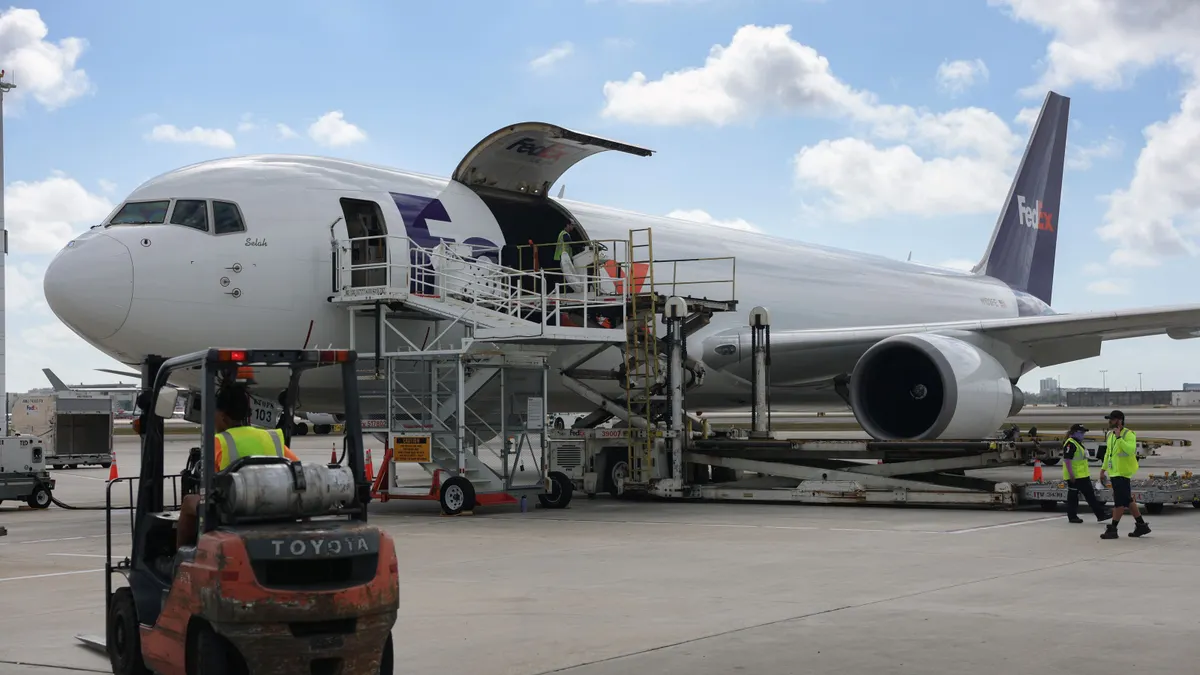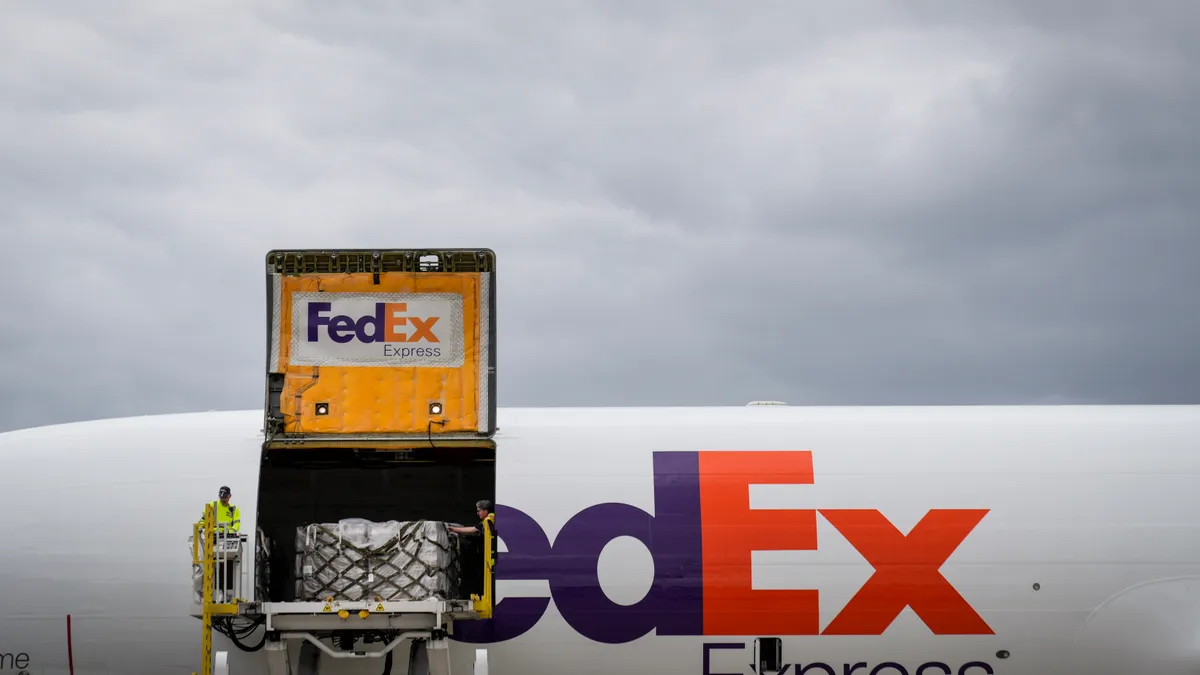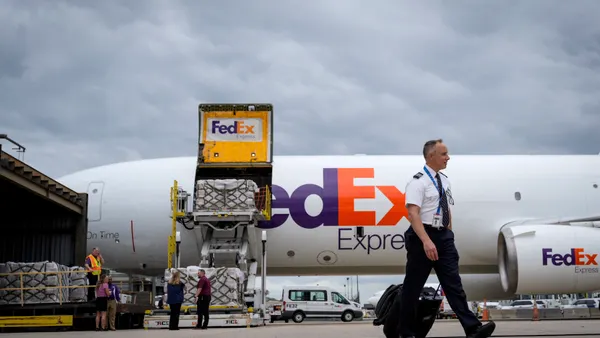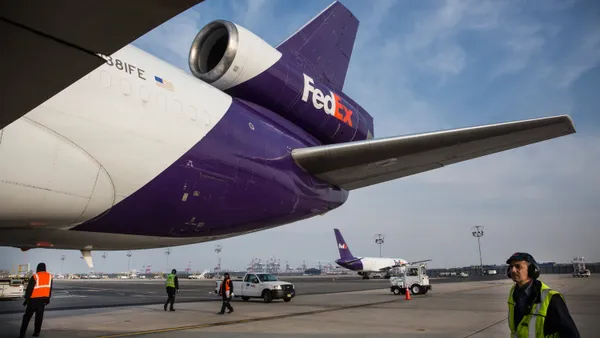Dive Brief:
- The Federal Aviation Administration ended its ordered reduction in air traffic Monday, allowing air cargo and passenger operations to return to normal.
- The agency had ordered 40 major airports in the U.S. to reduce traffic by a total of 10% in scaled increments due to staffing restraints resulting from an ongoing government shutdown. The FAA later reduced the cuts to 6% and then 3% following the reopening of the government.
- “Today’s decision to rescind the order reflects the steady decline in staffing concerns across the [National Airspace System] and allows us to return to normal operations,” said FAA Administrator Bryan Bedford in a Sunday press release announcing the termination of the air traffic cuts.
Dive Insight:
The FAA’s air traffic cuts had minimal impact on air cargo flows, and flight operations are back to normal, according to Derek Lossing, founder and senior industry advisor for e-commerce and transportation at Cirrus Global Advisors.
“In the end, the impacts to the flying public were more severe than to the air cargo community,” Lossing said in an email. He noted that cancellations across regional carriers such as SkyWest Airlines and Envoy Air affected planes that are too small to carry significant volumes of air cargo.
“The large U.S. airlines did a good job protecting their hub to hub flying and their largest aircraft that often are the backbone of their domestic cargo networks,” said Lossing, who previously served in logistics leadership roles at Amazon. He added that forwarders and shippers were largely proactive in assessing alternative flights and collaborating with airlines.
On the carrier side, UPS monitored its operations at affected airports and flexed its network to protect shipments, a spokesperson said in an email. The company was also partially shielded because the ordered cuts affected flights between 6 a.m. and 10 p.m. local time.
“A large number of our flights take place overnight, which was outside of the FAA’s time restriction,” the spokesperson said.
Despite the more drastic effects on consumer flights, ClearJet, which uses passenger aircraft capacity to transport customers’ packages, saw “zero impact” and did not have to employ any mitigation steps, according to CEO and founder Chris Guggenheim.
“ClearJet’s SuperCarrier network continued to run normally throughout, and operations remain normal,” Guggenheim said in an email.
Although air cargo operations have largely avoided major impacts from the cuts, the industry has still faced significant challenges in recent weeks. UPS and FedEx have both grounded parts of their fleets after a Boeing MD-11 operated by UPS crashed in Louisville, Kentucky, earlier this month, killing at least 14 people.
Meanwhile, weather-related cancellations slowed some cargo flows at Delta’s Atlanta hub during the three days after the FAA first announced its plan to cut air traffic, according to Lossing.
“But that challenge would be consistent any time winter weather hits an airport like Atlanta- not solely the result of the FAA directive,” he said.
Editor’s note: This story was first published in our Logistics Weekly newsletter. Sign up here.















